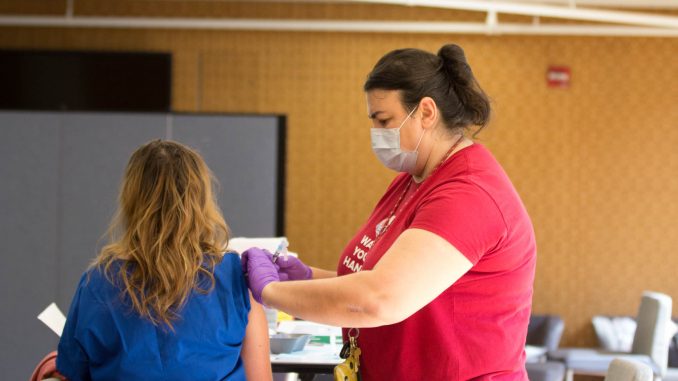
While 70 percent of college students ages 18-24 surveyed believed getting a flu vaccine is important, only 46 percent reported actually getting one, according to a 2017 survey by the National Foundation for Infectious Disease.
This year, flu season may be magnified by the COVID-19 pandemic because the two diseases have similar symptoms including a fever, cough and muscle aches, said Heather Clauss, a clinical medicine professor and director of Temple University’s Infectious Diseases Fellowship Program.
“The overlap in symptoms will add confusion and anxiety,” Clauss said. “There’s going to be more people with respiratory symptoms in the coming months.”
Temple University Hospital and Temple University Lung Center are preparing for the upcoming winter season by ramping up their supplies of personal protective equipment, laboratory supplies and respiratory equipment, Clauss said.
Flu season starts in October and typically ends in March or April, according to the Centers for Disease Control and Prevention. At almost seven months into the COVID-19 pandemic it’s important to distinguish between the two viruses, since they are treated differently, said Abby Rudolph, an epidemiology and biostatistics professor.
COVID-19 causes a loss in sense of taste and smell, that doesn’t occur when someone has the flu, Clauss said.
On Sept. 28, Student Health Services announced free flu vaccines are available for all university students, staff and faculty at the Aramark Student Recreation and Training Complex and the Health Science Center on Broad Street near Ontario. Students must make an appointment online and show an OWLcard to receive a vaccine.
Prescription antiviral drugs are available and approved by the United States Food and Drug Administration for the flu, but so far none are approved to treat COVID-19, according to the CDC.
To date, the pandemic has infected more than 35 million people and caused over 1 million deaths worldwide, the New York Times reported.
Indoor gatherings during cold weather and social distancing fatigue may cause the COVID-19 virus to spread, Clauss said.
“We as a society are less enthusiastic about maintaining those restrictions leading to an increase in COVID infection in the winter,” she added.
The flu spreads quicker during the winter months because more people spend time indoors, BBC reported.
“My biggest concern is that everybody’s immunity will be decreased,” said Rohan Harolikar, a freshman biology major. “Getting a flu vaccine should be mandatory.”
At the beginning of the pandemic, the surge of COVID-19 patients caused many hospitals, especially in underserved communities to be understaffed, with limited resources to handle the demand, the New York Times reported.
Rudolph is worried an average or above-average flu season may add stress to hospitals, she said.
“It can mean that we really strain the system,” Rudolph added. “We might not have enough ICU beds to care for people.”
As many people as possible should get the flu shot, Rudolph said.
Though flu vaccines only reduce the risk of the flu by 40 to 60 percent, it can help prevent hospitalization according to the CDC.
“Anything you can do to reduce your chances of getting the flu is a good thing because we want to reduce the hospitalization burden,” Rudolph said.
Gabby Perotti, a freshmen music technology major, will be getting a flu vaccine this year, since she believes it’s important for public health, she said.
“You’ve seen the damage that COVID can do,” Perotti added. “When there are diseases that have vaccines that can prevent them, why would we try to not prevent them?”
Rudolph recommends the Temple community take necessary precautions for prevention, like social distancing, wearing a mask, washing hands regularly and using hand sanitizer.
“Don’t try to push through it, stay home and get tested to see which one you have,” Rudolph said. “Prevention is worth a pound of cure.”


Be the first to comment